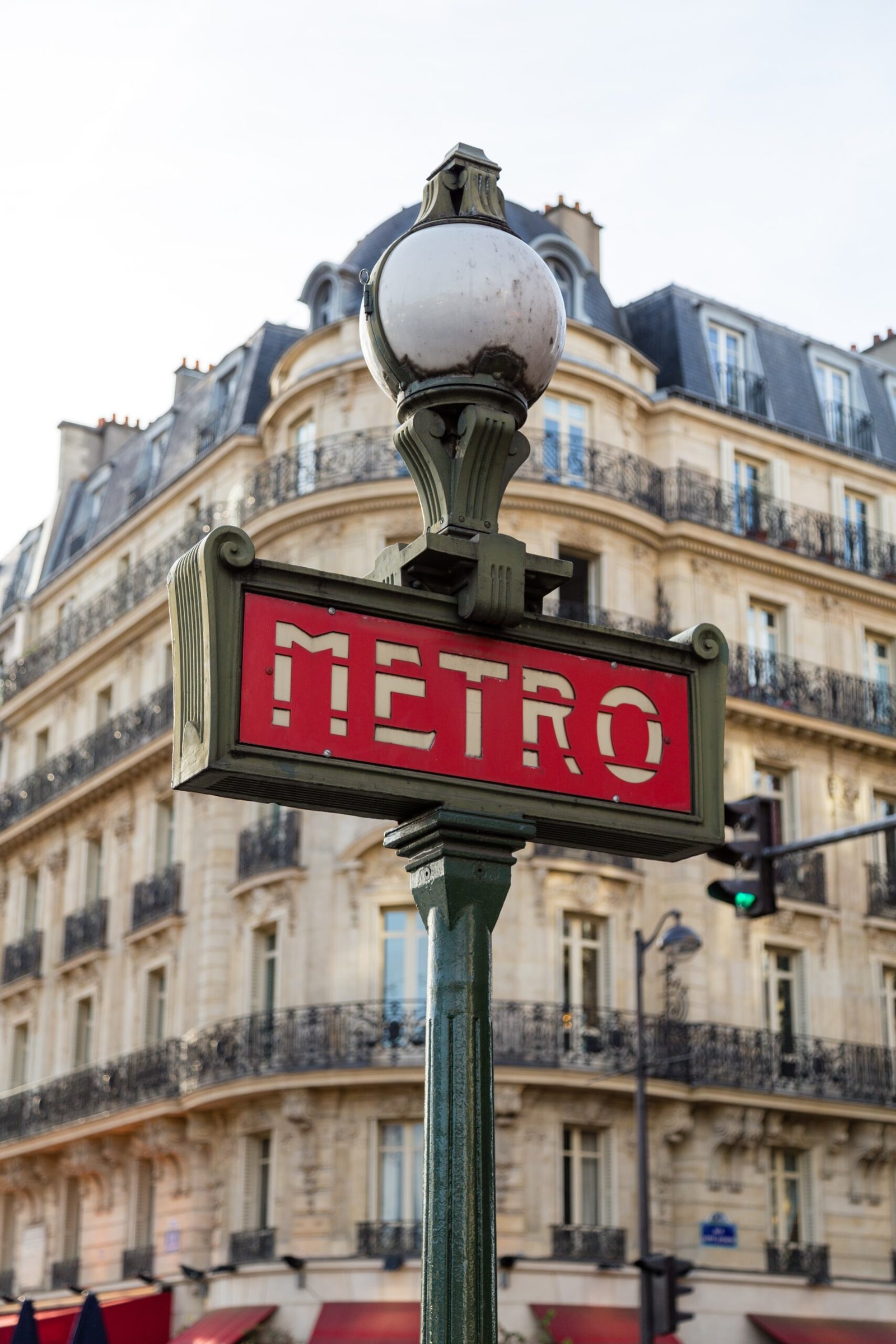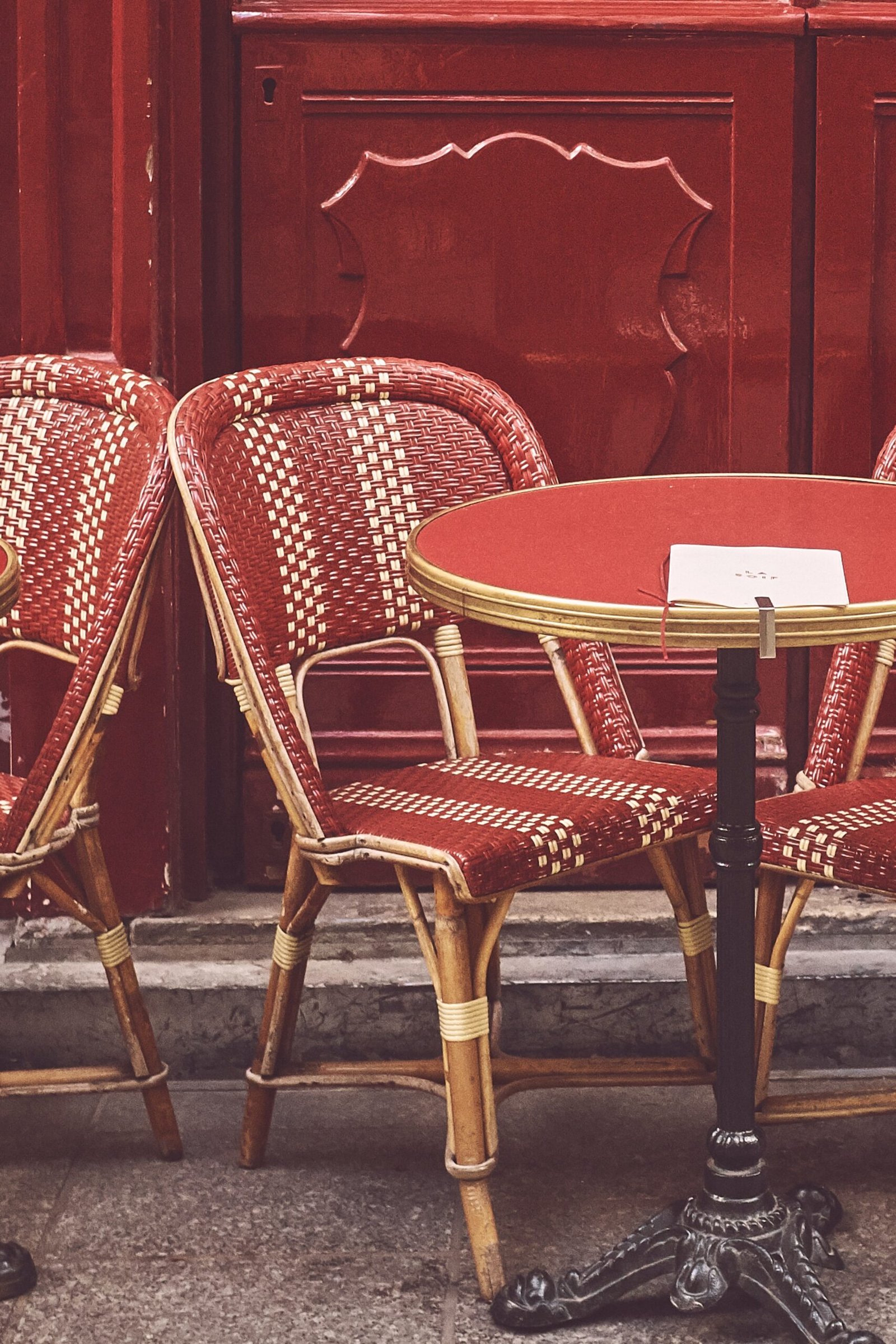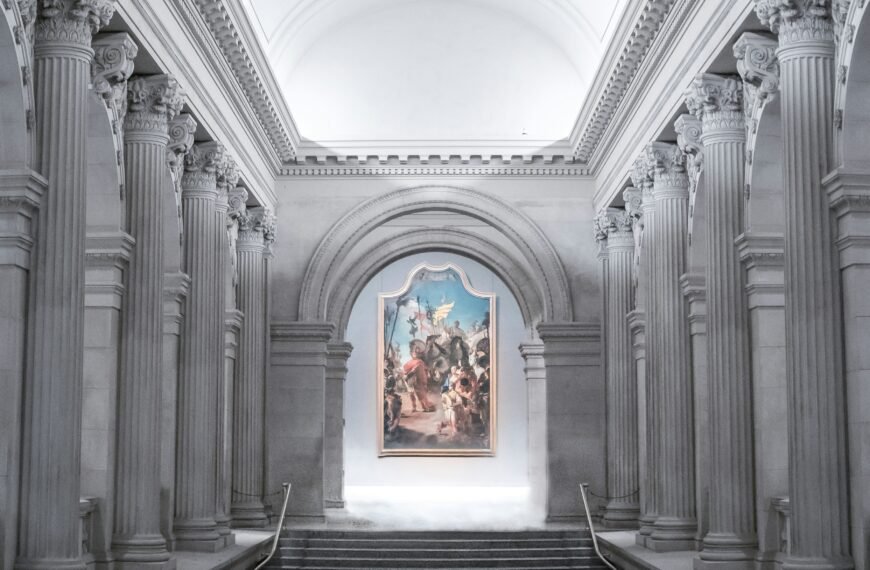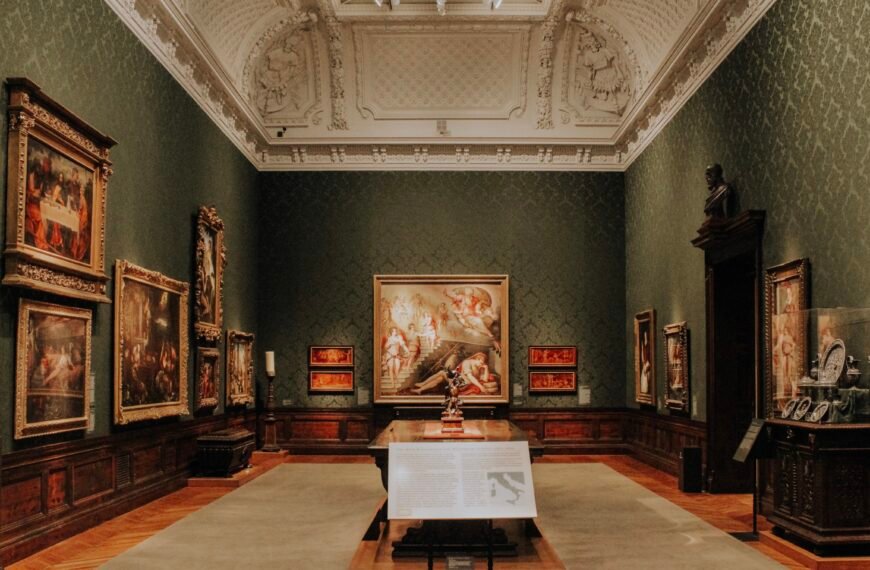Have you ever wondered what makes the Louvre Museum so extraordinary? Located in the heart of Paris, this iconic institution holds an unparalleled collection of art and historical treasures. From the enigmatic smile of the Mona Lisa to the grandeur of the Egyptian antiquities, the Louvre Museum is a testament to human creativity and ingenuity. Its awe-inspiring architecture, spanning over 800 years of history, invites visitors from around the world to immerse themselves in the beauty and wonder of the artistic masterpieces it houses. Get ready to embark on a journey through time as you unravel the captivating history and significance of the Louvre Museum.

Overview
The Louvre Museum, located in the heart of Paris, is one of the most renowned and iconic museums in the world. It is a symbol of art, history, and culture, attracting millions of visitors each year. This comprehensive article will take you on a journey through the history, collections, famous artworks, acquisitions and expansions, visitor information, architectural features, notable events and exhibitions, as well as provide you with some useful visiting tips. So, let’s delve into the fascinating world of the Louvre Museum!
History
The Louvre Museum has a rich and colorful history that dates back to the 12th century. Originally a fortress constructed under the reign of Philip II, it later became a royal palace during the reign of King Louis XIV. It was King Louis XVI who opened the Louvre to the public as a museum in 1793, showcasing an initial collection of 537 paintings. Over the years, the museum has expanded and evolved, consolidating an impressive collection of art from various civilizations and periods.
Location
Situated on the Right Bank of the Seine River, the Louvre Museum occupies a prime location in the 1st arrondissement of Paris. The main entrance to the museum is through the iconic Louvre Pyramid, which serves as a gateway to the vast exhibition space within the museum. Its central location within the city makes it easily accessible to visitors from all directions.
Size and Layout
Known for its massive size, the Louvre Museum covers an area of over 72,000 square meters and houses an extensive collection of over 38,000 artworks. The museum is divided into several wings, each dedicated to different periods and civilizations. It consists of three main wings: the Richelieu Wing, the Denon Wing, and the Sully Wing, creating a complex maze of corridors and galleries that can take days to fully explore.

Collections
The Louvre Museum boasts an extraordinary collection that spans across various artistic disciplines and time periods. From ancient Egyptian artifacts to Greek and Roman antiquities, from Islamic art to paintings and sculptures, the museum offers a diverse range of artworks to satisfy any artistic taste. Additionally, the Louvre Museum is home to an impressive collection of decorative arts and furniture, showcasing the craftsmanship and opulence of previous eras.
Artworks
Within the vast collection of the Louvre Museum, there are several standout artworks that have become world-renowned symbols of artistic excellence. These masterpieces include the Mona Lisa, the enigmatic portrait painted by Leonardo da Vinci, the Venus de Milo, a marble sculpture depicting the goddess of love and beauty, the Winged Victory of Samothrace, a Hellenistic statue capturing the dynamic movement of a victory, The Raft of the Medusa, an emotionally charged painting by Théodore Géricault, and Liberty Leading the People, an iconic painting by Eugène Delacroix representing the French Revolution.
Acquisitions and Expansions
The Louvre Museum has consistently expanded and acquired new artworks over the years. The most notable expansions include the construction of the Richelieu Wing in the 19th century, which added more exhibition space and allowed for the display of additional collections. The Denon Wing was built in the 20th century to house the museum’s large collection of ancient Egyptian art. Additionally, the Sully Wing was opened in the 1990s, providing space for exhibiting medieval art. Most recently, the Louvre Abu Dhabi was inaugurated in 2017 as a satellite museum, showcasing the expansion of the Louvre brand beyond its Parisian boundaries.
Visitor Information
Before embarking on your visit to the Louvre Museum, it is important to be aware of important details regarding opening hours, ticket prices, guided tours, and accessibility.
Opening Hours
The Louvre Museum is open every day except Tuesdays. It opens at 9 am and closes at 6 pm, except on Wednesdays and Fridays when it remains open until 9:45 pm.
Ticket Prices
The ticket prices for the Louvre Museum vary depending on the type of ticket and the age of the visitor. General admission for adults costs €15, with reduced rates available for students, senior citizens, and disabled visitors. Children under the age of 18 enter for free.
Guided Tours
To enhance your museum experience, guided tours are available at the Louvre Museum. These tours provide valuable insights into the artworks and history of the museum. Additionally, audio guides are available in multiple languages to provide self-guided tours.
Accessibility
The Louvre Museum is committed to providing accessibility for all visitors. Wheelchair accessibility is available, and there are elevators and ramps throughout the museum. Visual and hearing-impaired visitors can benefit from special services and facilities, including audio descriptions and sign language interpreters.

The Louvre Pyramid
The Louvre Pyramid is an iconic architectural feature of the museum and has become synonymous with its identity. Designed by Chinese-American architect I.M. Pei, the pyramid was constructed in the 1980s and serves as the main entrance to the museum. Its unique and striking design blends modernity with the classical architecture of the surrounding buildings.
Design and Construction
The design of the Louvre Pyramid was met with both praise and controversy. Its modernist aesthetic and stark contrast to the historic buildings initially sparked heated debates among locals and critics. However, as time passed, the pyramid has become an accepted and beloved addition to the museum. Constructed with steel and glass, the pyramid stands 21.6 meters tall and is composed of 603 rhombus and 70 triangular glass segments.
Controversies
The construction of the Louvre Pyramid was not without controversy. Some criticized the modern design, claiming that it clashed with the historical architecture of the Louvre Museum. Others argued that it imposed a foreign architectural style on a French landmark. However, despite the initial backlash, the pyramid has since become an integral part of the Louvre’s identity, symbolizing the harmonious coexistence of the old and the new.
Symbolism
The Louvre Pyramid carries symbolic significance that extends beyond its aesthetic appeal. The number of glass segments used in its construction is said to represent simplicity and clarity. It also symbolizes the merging of cultures, as it was designed by a Chinese-American architect for a French museum. Furthermore, the pyramid serves as a metaphorical gateway, inviting visitors to embark on a journey through time and art as they step into the museum.
Architectural Features
The Louvre Museum’s architecture is a testament to the rich history of the building and its transformations over the centuries. From the grandeur of the palace exterior to the intricately designed courtyards and the opulence of the palace interior, the museum presents a stunning blend of architectural styles and features.
Palace Exterior
The exterior of the Louvre Museum is a magnificent sight to behold. The classic Renaissance architecture, characterized by grand arches and columns, gives the building an imposing and regal appearance. The intricate details, such as ornate sculptures and intricate carvings, showcase the craftsmanship of the artisans who worked on the building.
Courtyards
The Louvre Museum is renowned for its beautiful courtyards, which provide visitors with tranquil spaces to relax and admire the surroundings. The Cour Carrée, the oldest courtyard of the Louvre, is a serene space adorned with columns and statues. The Cour Napoléon, with its grand glass pyramid, is a bustling area that serves as the main entrance to the museum. The Cour Marly and the Cour Puget are two other notable courtyards that house a splendid collection of large-scale sculptures.
Palace Interior
Stepping inside the Louvre Museum feels like stepping into a palace of art. The interior of the museum is adorned with lavish decorations, including gilded ceilings, ornate chandeliers, and intricate frescoes. The various galleries and exhibition spaces are designed to showcase the artworks in the most captivating way possible, with each room telling a story of its own.
Notable Events and Exhibitions
The Louvre Museum has been the stage for many significant events and exhibitions throughout its history. These events have highlighted the museum’s cultural and historical significance, further cementing its reputation as a global hub of art.
Inauguration
The Louvre Museum was officially inaugurated as a museum in August 1793, during the French Revolution. The grand opening signaled a shift in the purpose of the building, from a royal palace to a public art institution. This momentous occasion marked the beginning of the museum’s extraordinary journey through time.
Napoleon III’s Apartments
During the 19th century, the Louvre Museum housed the lavish apartments of Napoleon III. These opulent living quarters were a testament to the grandeur and extravagance of the time. Today, visitors can explore these apartments and get a glimpse into the luxurious lifestyle of the French emperor.
World’s Fair of 1900
The Louvre Museum played a prominent role in the World’s Fair held in Paris in 1900. Numerous artworks and artifacts from the museum were displayed, attracting visitors from all corners of the globe. This event solidified the Louvre Museum’s position as a world-class institution and showcased its exceptional collection to a global audience.
The Nazi Looting during World War II
The Louvre Museum suffered significant losses during World War II. Many artworks were stolen or destroyed by the Nazis during their occupation of Paris. However, thanks to the heroic efforts of museum staff, numerous artworks were hidden or evacuated, preventing a total loss of this invaluable cultural heritage.
Louvre Pyramid’s 30th Anniversary
In 2019, the Louvre Pyramid celebrated its 30th anniversary. The occasion was marked by special events and exhibitions, showcasing the enduring impact and popularity of this iconic architectural feature. It served as a reminder of the importance of the pyramid in the museum’s history and its continued significance in the present day.
Visiting Tips
Here are a few indispensable tips to ensure a smooth and enjoyable visit to the Louvre Museum:
Plan Ahead
Given the vastness of the Louvre Museum and the sheer number of artworks to see, it is essential to plan your visit in advance. Decide which collections and artworks you want to prioritize and create a rough itinerary. Check the museum’s website for any special exhibitions or events that may interest you during your visit.
Priority Access
To avoid the crowds and long lines, consider purchasing a priority access ticket. These tickets allow you to bypass the regular entrance and enter the museum through a dedicated line, saving you time and ensuring a more efficient visit.
Crowd Avoidance
The Louvre Museum can get extremely crowded, especially during peak tourist seasons. To avoid the crowds, try visiting early in the morning or later in the afternoon, when the museum tends to be quieter. Additionally, explore areas of the museum that are less frequented by tourists, such as the lesser-known galleries and wings.
Must-See Highlights
While it may be tempting to try and see everything the museum has to offer, it can be overwhelming and time-consuming. Identify the must-see highlights, such as the Mona Lisa, Venus de Milo, and Winged Victory of Samothrace, and prioritize those. This way, you can ensure you don’t miss out on the most iconic artworks of the Louvre Museum.
Conclusion
The Louvre Museum is a true gem of the art world, offering a captivating journey through time and culture. From its humble beginnings as a fortress to its current status as an iconic museum, the Louvre has continuously evolved and expanded, becoming a symbol of artistic excellence. With its extensive collection, awe-inspiring architecture, and notable artworks, the Louvre Museum provides an unparalleled cultural experience for visitors from around the globe. So, whether you’re an art enthusiast or simply curious about the world’s treasures, a visit to the Louvre Museum is an absolute must. Prepare to be enthralled by the wonders that await you within its walls.








